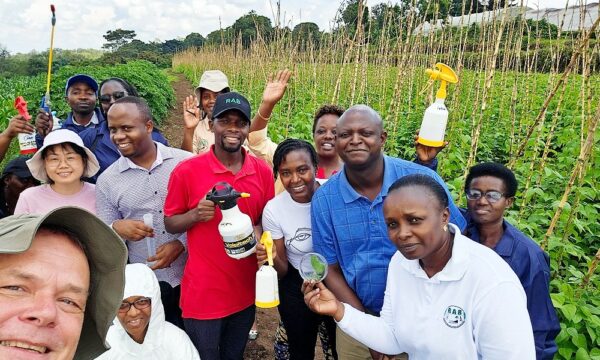
Floating pennywort (Hydrocotyle ranunculoides): on the EU species of Union concern list and a target for biocontrol (Credit: Kate Constantine, CABI)
Invasive alien species are a major threat worldwide, impacting upon millions of livelihoods and threatening biodiversity. The situation is worsening, due in no small part to increased global trade and transport. The economic costs of IAS can be vast: worldwide, invasive species are estimated to cost US$1.4 trillion per year – close to 5% of global GDP.
In the European Union alone, invasive alien species (IAS) are estimated to cost €12-20 billion a year.
In response to this threat, the European Union adopted Regulation (EU) No 1143/2014 which makes compulsory the management of key IAS that are of concern to the region. Methods include limitation of spread, eradication of early invasions and active management of established IAS. A list of 37 species to be included under the regulation was approved by EU Member States in December 2015 and has recently come into force (Regulation (EU) 2016/1141). It includes 23 animals and 14 plants whose current and potential impacts across the region will mean that collaborative and concerted action is required across the EU.
This is part of the EU’s biodiversity strategy which aims to halt the loss of biodiversity and ecosystem services in the EU by 2020 and is in line with the Convention on Biological Diversity’s (CBD) Aichi Targets, particularly Target 9:
“By 2020, invasive alien species and pathways are identified and prioritized, priority species are controlled or eradicated, and measures are in place to manage pathways to prevent their introduction and establishment.”
At CABI, we have been working on invasive species at a global scale for decades and are experts in their management using both traditional methods and through biological control. This new legislation is welcome; recognising the serious threats that invasive species pose and imposing compulsory measures to lessen the spread and impacts of IAS in the EU.
Related News & Blogs
Biological control in action: Zambia’s field days on fighting fall armyworm
Experts from CABI recently held two field days and an expo in Zambia, showcasing innovative approaches to pest management to 584 farmers, agro-dealers and other stakeholders to help raise awareness of approaches to tackle the invasive fall armyworm (Sp…
11 June 2025




